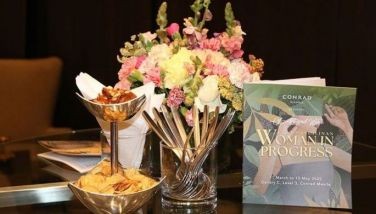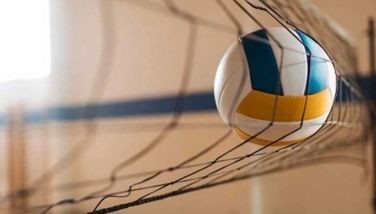Binibining Cebu’s Pasarela de Hablon

Photos by Earl Tavera
CEBU, Philippines — It all started when Cebuano fashion designer Dexter Alazas decided to look for home-grown materials to use in his creations. Alazas felt it wasn’t enough to create something out of what’s fashionable and popular – you also needed to use something that embodied your heritage.
Alazas’ search was over by 2007 when he came across Hablon de Argao, a byproduct of the municipality’s traditional weaving process of the same name. When he had gotten the search out of the way, it was then a matter of collaboration, of rediscovery.
Many people had told him the renaissance of hablon was never going to happen. He would be told that the cloth was too rigid and was only meant for blankets.
Just over the weekend, Alazas was able to headline a fashion show featuring wearable apparels and accessories made of Hablon de Argao. Preceding the Binibining Cebu Philippine Terno Competition on September 23 at the Cabicera de Argao, the 54 Bb. Cebu candidates walked the ramp featuring pieces from Alazas’ AMANO Craft Collection, wearing all sorts of casual and sophisticated outfits made by hablon.
“Yes it’s [fashion show] challenging, not as much as designing the clothes or creating the collection. It was the manufacturing of the cloth. We waited for a long time because a lot of people are ordering hablon now,” shares Alazas.
Often called the Fairy Godmother of Hablon for being a staunch hablon advocate, Alazas says he couldn’t have done it without the help of the local government of Argao, the Province of Cebu and especially Jorelyn Concepcion, the University Director in Extension Services at the Cebu Technological University in Argao, who Alazas also calls the Mother of Hablon.
Today, Alazas isn’t the only artist utilizing hablon. Other Pinoy and foreign artisans from all sorts of industries like furniture and even couture are now ordering the cloth.
Indeed, Alazas was able to transform hablon into wearable creations during the Saturday show, and also turned around the fate of the habloneras of Argao who are barely keeping up with orders.
The movement was able to churn out new local designers in Argao to cultivate hablon. The weavers, in turn, are learning more innovative ways to create the hablon.
More than anything, Alazas’ efforts in Pasarela de Argao is an advocacy, and the AMANO Craft Collection was meant to call on local and global markets and invite them to zero in on the hablon. He also says that it’s high time that major foundations and events recognize the potential of the hablon and maybe even support a thriving local industry that provides economic development for Filipinos.
“It is my way of adhering to a corporate social responsibility not just as a designer but as a Cebuano,” Alazas explains, declaring that his goal is to make sure everything is as organic and indigenous as possible, done by Bisaya hands.
“What good is a local industry if it does not use local materials in its designs? If we are to help the Philippines compete internationally, it is not enough that you are a good Filipino designer using imported materials.” (FREEMAN)
- Latest
























